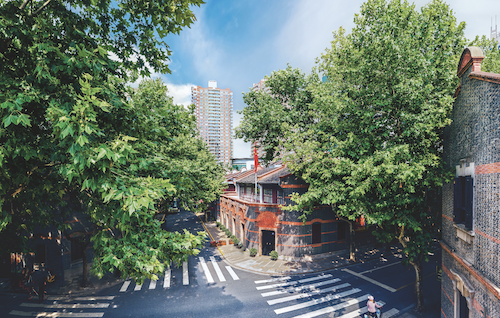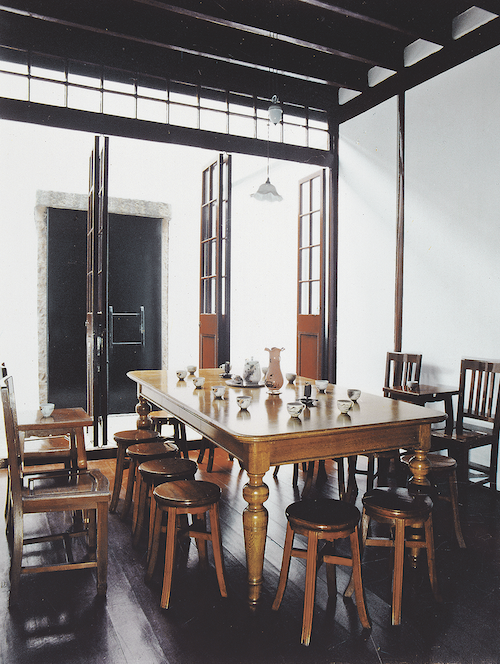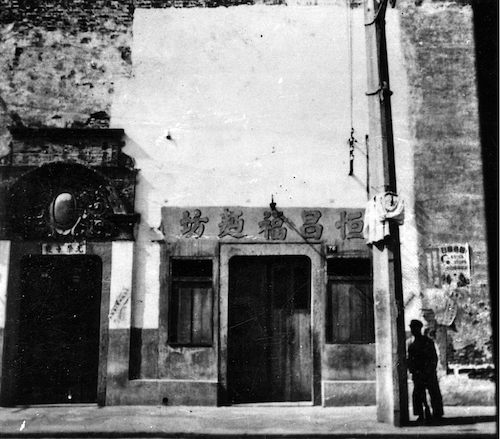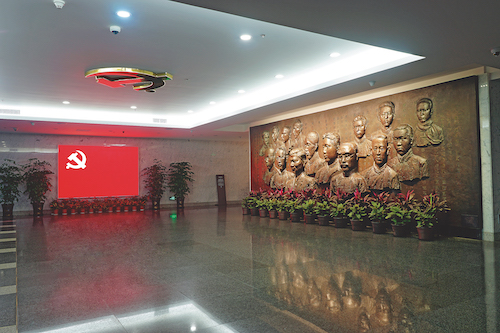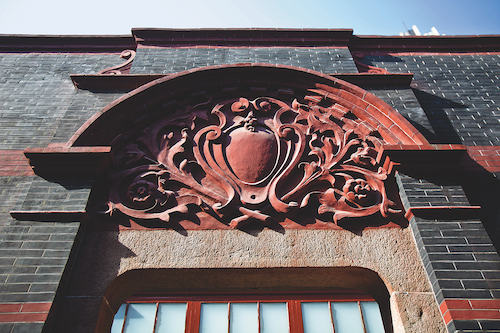“Unforgettable Red Route Tour” is another episode of “Stories of Shanghai Architecture” and will take you on an online journey to the classic ‘red’ spots in Shanghai, where you can experience the history and development of the ‘red’ culture.
Through this unforgettable red tour route, you will discover the magnificent history of development, progress, and innovation of the city of Shanghai from every single building you are visiting. Different buildings seen from different sides, each emphasize their unique status in the city – this is the birthplace of the Communist Party of China, the place where the Chinese Communists’ initial aspirations and dreams set sail, red genes, red bloodlines and inheritance goes on for hundreds of years.
The Route:
Site of the First National Congress of the CPC → Former Residence of Zhou Enlai → Former Residence of Dr. Sun Yat-sen in Shanghai → Yuyang Lane → The Memorial Hall at the Site of the Second National Congress of the Communist Party of China → Former Residence of Mao Zedong on Maoming Road → Shanghai History Museum.
Site of the First National Congress of the CPC
(76 Xingye Road, Huangpu District)
On July 23, 1921, thirteen intellectuals speaking different dialects and two foreigners quietly gathered at a long table in a humble living room and started a discussion lasting for a few days. This discussion in the name of the First National Congress of the CPC was held at 106 Rue Wantz (now 76 Xingye Road) and it witnessed the official founding of China’s Marxist political Party.
At that time, the site of the First National Congress of the CPC was known as “Li Residence” at the Shude Lane, which was a part of Rue Amiral Bayle (now 374 South Huangpi Road). In the summer of 1921, representatives of early Communist Organizations all over China and Comintern representatives came into the living room of this “Li Residence” to chew over the country’s future.
In the early 1950s, after the site’s restoration, a memorial hall was founded to commemorate the First National Congress of the CPC. It became Major Historical and Cultural Site Protected at the National Level in March 1961.
//DANISH
Historier om Shanghai Arkitektur: Den Uforglemmelige Røde Rute
“Den Uforglemmelige Røde Rute” er en anden episode af “Historier om Shanghai Arkitektur” og tager dig med på en online rejse til de klassiske ‘røde’ steder i Shanghai, hvor du kan opleve historien og udviklingen af den ‘røde’ kultur.
Gennem denne uforglemmelige ‘røde’ tur vil du opdage fra hver eneste bygning du besøger, den storslåede historie om udvikling, fremgang og innovation, som Shanghai har gennemgået. De forskellige bygninger i byen har nemlig hver deres unikke status – her er Kinas kommunistiske partis fødested, stedet hvor de kinesiske kommunisters indledende ambitioner og drømme satte fart, røde gener, røde afstamning og arv som fortsætter i hundreder af år.
Ruten:
Stedet for Kina Kommunistpartis Første Nationale Kongres → Zhou Enlais Tidligere Bopæl → Sun Yat-sens Tidligere Bopæl i Shanghai → Yuyangli → Mindesal for Kinas Kommunistpartis Anden Nationale Kongres → Mao Zedongs Tidligere Bopæl på Maoming Vej → Shanghai Historiske Museum.
Stedet for KKPs Første Nationale Kongres
(Xingye Vej 76, Huangpu-distriktet)
Den 23. juli 1921 samledes tretten intellektuelle, der talte forskellige dialekter, og to udlændinge ved et langt bord i en lille stue og startede en diskussion, der varede i et par dage. Denne diskussion var det såkaldte KKPs Første Nationale Kongres, der blev afholdt på Rue Wantz 106 (nu Xingye vej 76) og blev således vidne til grundlæggelsen af Kinas Kommunistiske Parti.
På det tidspunkt var stedet for KKPs første nationale kongres kendt som “Li Residens” på Shude vej, som var en del af Rue Amiral Bayle (nu syd Huangpi vej 374). I sommer 1921 kom repræsentanter for de tidligere kommunistiske organisationer og Komintern-repræsentanter fra forskellige steder i Kina og mødtes i gæsteværelset i “Li Residens” for at tygge på landets fremtid.
I begyndelsen af 1950’erne, efter stedets rekonstruktion, blev der oprettet en mindehal til minde om KKPs første nationale kongres. I marts 1961 blev stedet for KKPs første nationale kongres bekendtgjort at være en vigtig kulturel relikvie på nationalt niveau.

